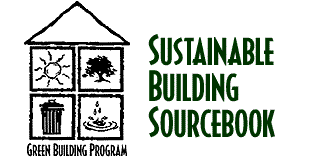
|

|
Avoid long narrow areas of turf, which are difficult to water efficiently.
Locate turf areas close to the house, and lower-maintenance areas near the edges or rear of the lot.
For non-automatic systems, use hose-end efficient sprinklers for grass areas and soaker hoses for beds. Watering times will vary by plant type.
Buffalo grass is a native prairie grass which reaches a maximum height of 6 inches and can be left unmown. Buffalo grass generally requires full sun, but some of the newer varieties such as Prairie and 609 Buffalograss have improved shade tolerance (as little as 4 hours of sun per day). These varieties are available as sod, and exhibit a darker green color.
Bermuda grass is the most commonly used drought-tolerant grass in Texas. It is available as seed or sod and requires full sun. Tifway and Texturf 10 varieties have improved qualities.
Zoysia grass is a slow-growing grass for full sun to partial shade. It is available as sod. Belair or Myer Z-52 are good varieties for residential use. Zoysia may have special mowing needs, such as a reel-type mower.
St. Augustine grass is best for use in shady spots. It has poor drought and freeze tolerance. It is available only as sod, and if grown in full sun has the highest water needs of the grasses listed here.
Terracing of slopes can help slow down water. Plant groundcover, shrubs, and perennials to minimize the difficult maintenance problems of slopes.
Many slopes can be left in their natural state.
Planting beds are a logical alternative to grass if the cool green appearance of plants is still desired.
Wildflowers can be incorporated into native groundcovers and grasses.
Mulch beds of bark, stone or gravel can be used as pathways, or around driveways and utility areas.
Children's play areas can be covered with sand or bark mulch to create inexpensive "safety" zones. Paving products made of recycled tires are available to create a ground surface that minimizes injuries.
Decks and patios add value to homes and increase the square footage of living space. (Use pervious paving materials if possible. Decks can be built around existing trees, over slopes, and allow rain infiltration.)
Go to last guideline | Return to main Xeriscape page | Go to next guideline
return to Table of Contents
Sustainable Building Sourcebook web version copyright Sustainable Sources 1994-1999.